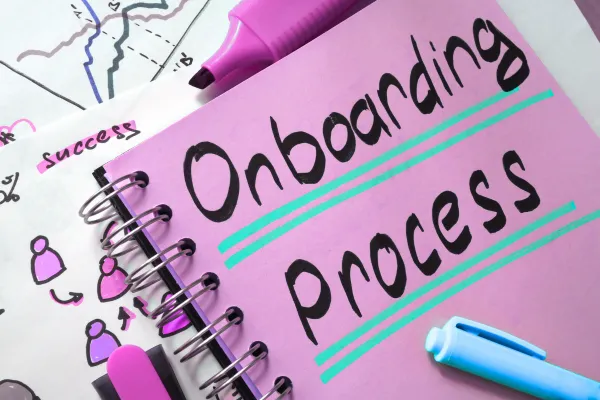
Build once, use always: Smarter client onboarding
If you’re running a service-based business, you’ve probably had that moment where a new client signs on and instead of celebrating, your heart sinks. Not because you don’t want the work, but because you know what’s coming. The emails. The back-and-forth. The chasing. The “where’s that up to again?” dance.
Client onboarding can be one of the biggest time drains in your business. But it doesn’t have to be.
With a bit of upfront effort, you can create a system that handles most of the heavy lifting for you consistently, reliably and without losing the human touch that makes your business shine.
Why manual onboarding is a hidden time trap
Manually onboarding clients often feels harmless at first. But over time, it adds up in hours, in headaches, and in missed opportunities. It’s more than just admin. It’s the first experience your client has with your business, and a clunky start can quietly undo the trust you worked hard to build.
Clients notice delays. They notice vague instructions. And they definitely notice when they’re asked for the same thing twice. These small frictions can erode confidence and, in some cases, lead to them walking away altogether. In fact, businesses report that almost half of client losses can be traced back to poor onboarding experiences.
Internally, it’s no better. Your team ends up spending more time chasing documents than doing meaningful work. And as more clients come on board, your capacity to keep up starts to crack.
In short, if your onboarding process isn’t structured, it becomes a bottleneck. And when that happens, growth becomes a problem instead of a goal.
How to build a repeatable onboarding system
The good news is, you only need to build a great onboarding system once. Done well, it becomes something you can tweak as needed, but rely on over and over again.
Start by mapping out the journey from the client’s perspective. From the moment they say “yes”, what do they need? What do you need from them? What’s the first meaningful outcome you want them to experience?
Once you’ve got the journey clear, break it into steps. Create a basic framework: how you welcome them, how you collect information, how you get aligned on goals, and how you kick things off properly.
Then, document it. Even a simple checklist or flowchart can take the mental load off your team. You’re not relying on memory or scrambling for the last email trail. Everyone knows what’s next.
Templates are your friend here. Proposal templates, email templates, and even a welcome message you can personalise quickly will save hours and keep the process consistent.
Make the first impression count
A warm, organised welcome goes a long way. As soon as a client comes on board, let them know what to expect. That might be a short email introducing their main contact person, outlining the next few steps, and giving them a sense of what’s coming.
Some businesses even include a small gift or a welcome kit to make their clients feel looked after. It sets a tone of care and professionalism from the outset.
Use automation without losing the human touch
Automation isn’t about replacing the personal side of your business; it’s about giving you the space to actually focus on it.
You don’t need a complex system to start. Tools like ClickUp can handle task tracking and client timelines. A platform like High Level can automate a welcome email and forms can help you gather client information without the email ping-pong.
The goal is simple: automate the repeatable stuff, so you’ve got more time for the strategic, creative, human stuff.
Personalise where it matters most
Standardisation and personalisation don’t need to be opposites. In fact, a good onboarding system helps you do both.
When the basics are handled (when your emails go out automatically, your forms collect the right info, and your team knows what’s next) you’ve got more bandwidth to tailor the experience. Maybe that’s a personalised video walkthrough of the proposal. Maybe it’s a quick check-in call that’s all about listening.
Whatever it is, you’re able to do it because your systems are doing their job.
Keep an eye on what’s working
Once you’ve got your system up and running, don’t just leave it on autopilot. Keep an eye on how long onboarding is taking, where clients get stuck, and what questions keep popping up.
Check in with new clients after onboarding wraps up. Ask what worked for them and what felt confusing. Even better, look at the data — are clients dropping off halfway through? Are support requests high during onboarding?
Use what you learn to keep refining the process. Small tweaks can make a big difference over time.
The bottom line
If you’re tired of onboarding feeling like a mess every time, you’re not alone. But it doesn’t have to be like that.
By building a repeatable, automated system, one that’s designed with both efficiency and experience in mind, you can stop losing time to admin and start spending it where it really matters: with your clients.
Build it once. Use it always. And get your time (and sanity) back.
